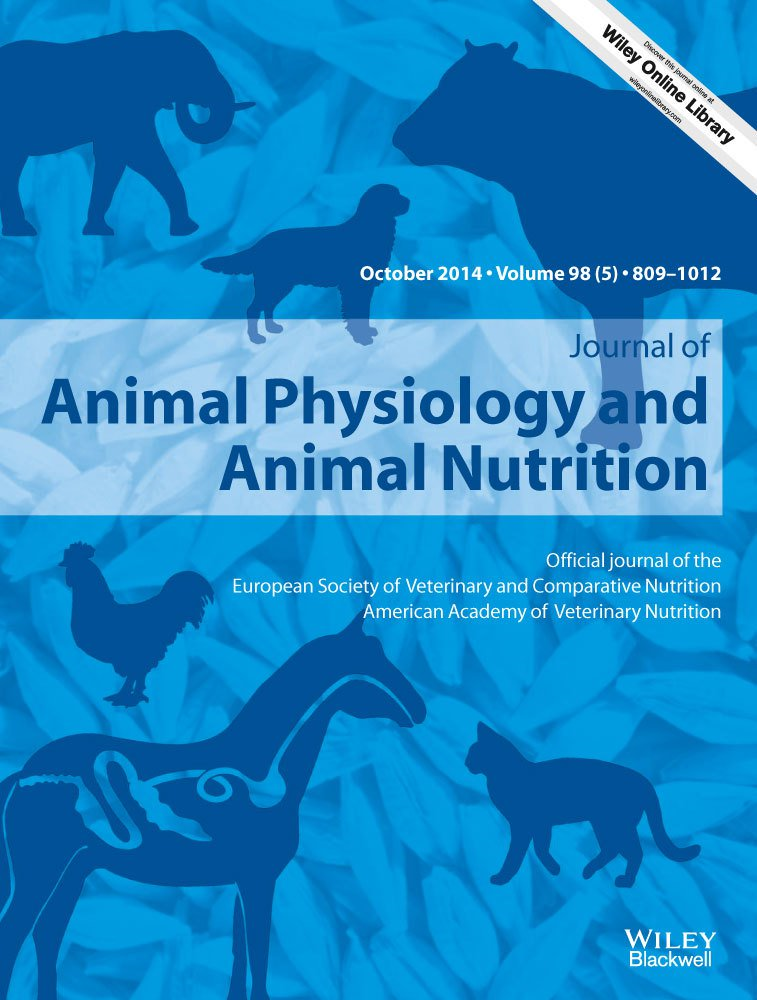Ver ítem
- xmlui.general.dspace_homeCentros e Institutos de InvestigaciónCICVyA. Centro de Investigación en Ciencias Veterinarias y AgronómicasInstituto de PatobiologíaArtículos científicosxmlui.ArtifactBrowser.ItemViewer.trail
- Inicio
- Centros e Institutos de Investigación
- CICVyA. Centro de Investigación en Ciencias Veterinarias y Agronómicas
- Instituto de Patobiología
- Artículos científicos
- Ver ítem
Subclinical ketosis in dairy cows: prevalence and risk factors in grazing production system
Resumen
The purpose of this study was to estimate the prevalence of Subclinical ketosis (SCK) between 4 and 19 days in
milk (DIM) in a grazing production system and investigate the importance of potential risk factors for SCK. This
cross-sectional study was conducted in dairy cows (n = 107), which had more of two parities. The concentration
of b-hydroxybutyric (BHB) in blood was quantified through a hand-held meter. Potential risk factors evaluated
were
[ver mas...]
The purpose of this study was to estimate the prevalence of Subclinical ketosis (SCK) between 4 and 19 days in
milk (DIM) in a grazing production system and investigate the importance of potential risk factors for SCK. This
cross-sectional study was conducted in dairy cows (n = 107), which had more of two parities. The concentration
of b-hydroxybutyric (BHB) in blood was quantified through a hand-held meter. Potential risk factors evaluated
were calving interval (CI), milk yield in previous lactation, metritis, dystocia, calf sex (male), parity (≤3 vs. ≥4)
and pre-partum body condition score (BCS ≤ 3.5 vs. ≥3.75). Prevalence of SCK was 10.3% (95% CI 4.7–15)
between 4 and 19 DIM. Risk factors identified were the occurrence of both metritis and pre-partum BCS ≥ 3.75.
Cows with metritis had 4.9 (95% CI 1.17–20.98) times more risk of developing SCK than cows without metritis.
And the cows with pre-partum BCS ≥ 3.75 had 5.25 (95% CI 1.32–21.11) times more risk of developing SCK
than cows with pre-partum BCS ≤ 3.5. Metritis could induce a lower feed intake and promote the development
of SCK. High pre-partum BCS could induce a greater mobilization of body reserves altering liver function and
aggravating post-partum NEB. The results are indicative of the expected prevalence of SCK in grazing production
system. Factors associated could help to identify cattle at risk of SCK and improve the management of strategies
to limit the effects.
[Cerrar]

Autor
Garro, Carlos Javier;
Mian, L.;
Cobos Roldán, M.;
Fuente
Journal of animal physiology and animal nutrition 98 : 838–844. (2014)
Fecha
2014-10
Editorial
Wiley
ISSN
1439-0396
Formato
pdf
Tipo de documento
artículo
Palabras Claves
Derechos de acceso
Restringido
 Excepto donde se diga explicitamente, este item se publica bajo la siguiente descripción: Creative Commons Attribution-NonCommercial-ShareAlike 2.5 Unported (CC BY-NC-SA 2.5)
Excepto donde se diga explicitamente, este item se publica bajo la siguiente descripción: Creative Commons Attribution-NonCommercial-ShareAlike 2.5 Unported (CC BY-NC-SA 2.5)

